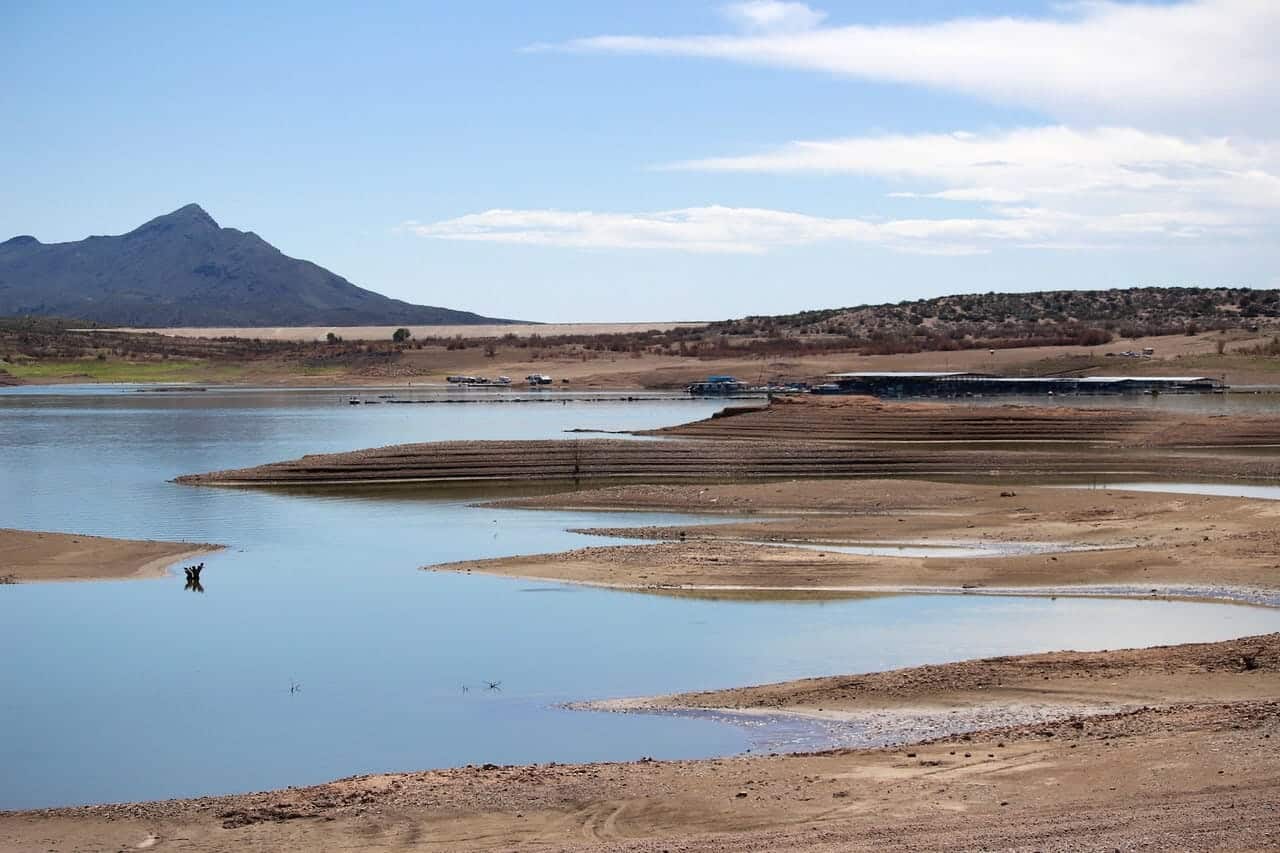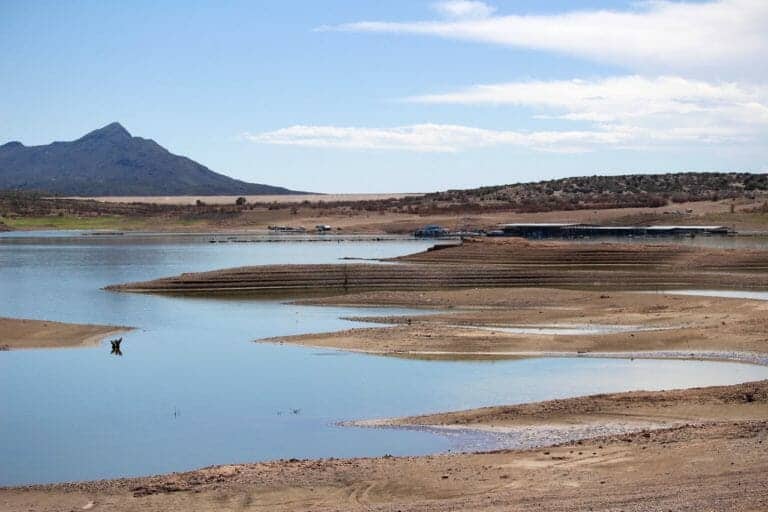The state’s reservoirs have done their job to help water users survive record drought in 2018. Now they are almost totally dry, and tensions are building over the year ahead. ‘Climate change is really happening,’ one water official says.
Elephant Butte Reservoir, the largest in New Mexico, photographed on Sept. 10, 2018, when it was at a mere 3.7 percent of capacity. Right now, New Mexico’s largest reservoir is at about three percent capacity, with just 62,573 acre feet of water in storage as of September 20.
Elephant Butte Reservoir’s low levels offer a glimpse of the past, as well as insight into the future. Over the past few decades, southwestern states like New Mexico have on average experienced warmer temperatures, earlier springs and less snowpack in the mountains. And it’s a trend that’s predicted to continue.
“There was no spring runoff this year. We started this year at basically the point we left off at last year,” says Mary Carlson, a spokesperson for the U.S. Bureau of Reclamation, which operates Elephant Butte Dam, just north of the town of Truth or Consequences. The federal agency runs the Rio Grande Project, which stores water that legally must be […]
Full article: As New Mexico Reservoirs Hit Bottom, Worries Grow Over the Future
More about water in New Mexico:
New Mexico: New administration opens up on lead data
Texas-New Mexico water fight could be impacted by SCOTUS ruling
New Mexico official: Texans are ‘stealing’ water and selling it back for fracking
New Mexico communities struggle to deliver water free of uranium
The Colorado River is evaporating, climate change largely to blame



